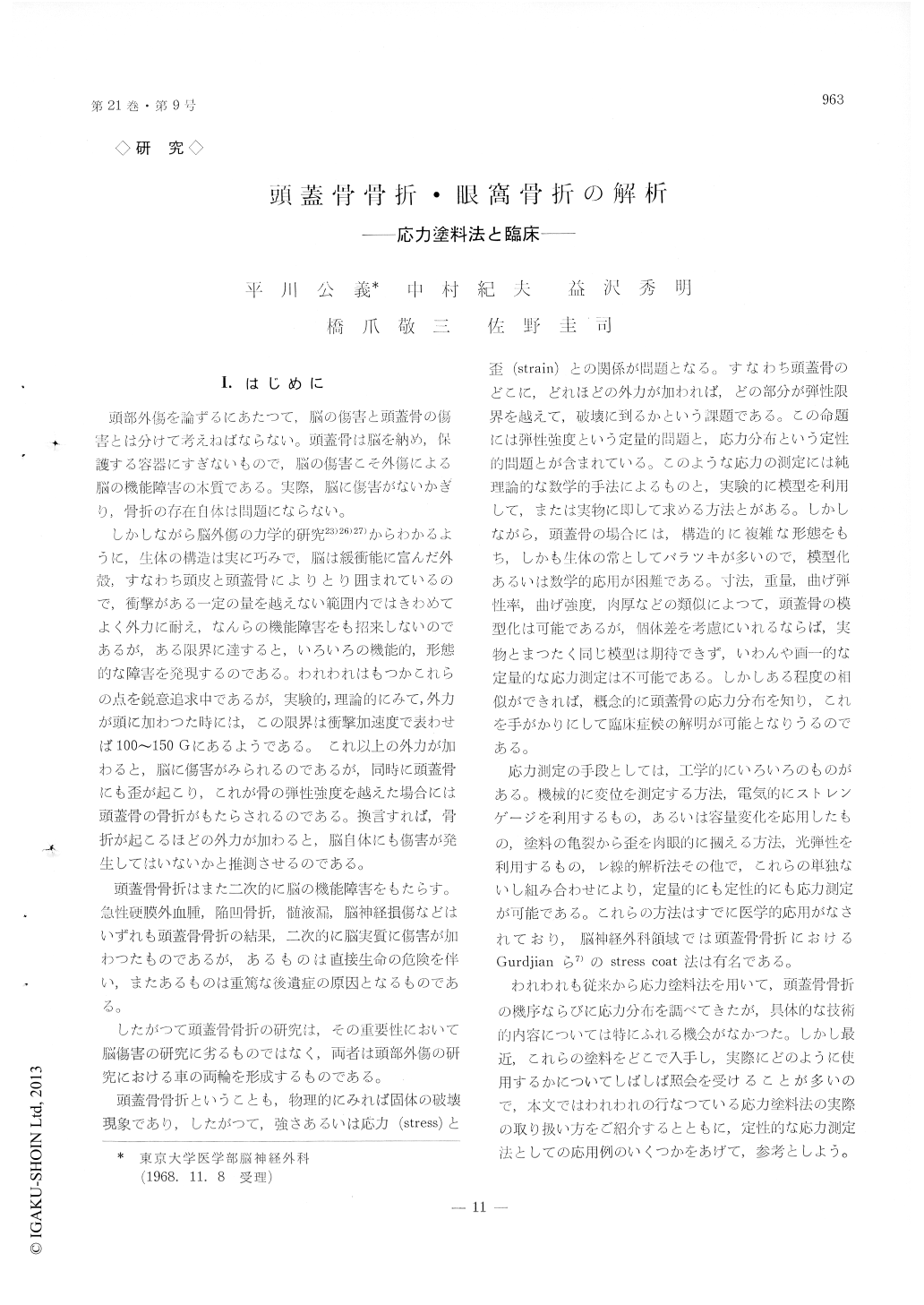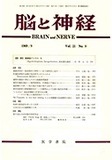Japanese
English
- 有料閲覧
- Abstract 文献概要
- 1ページ目 Look Inside
I.はじめに
頭部外傷を論ずるにあたつて,脳の傷害と頭蓋骨の傷害とは分けて考えねばならない。頭蓋骨は脳を納め,保護する容器にすぎないもので,脳の傷害こそ外傷による脳の機能障害の本質である。実際,脳に傷害がないかぎり,骨折の序在自体は問題にならない。
しかしながら脳外傷の力学的研究23)26)27)からわかるように,生体の構造は実に巧みで,脳は緩衝能に富んだ外殻,すなわち頭皮と頭蓋骨によりとり囲まれているので,衡撃がある一定の量を越えない範囲内ではきわめてよく外力に耐え,なんらの機能障害をも招来しないのであるが,ある限界に達すると,いろいろの機能的,形態的な障害を発現するのである。われわれはもつかこれらの点を鋭意追求中であるが,実験的,理論的にみて,外力が頭に加わつた時には,この限界は衝撃加速度で表わせば100〜150Gにあるようである。これ以上の外力が加わると,脳に傷害がみられるのであるが,同時に頭蓋骨にも歪が起こり,これが骨の弾性強度を越えた場合には頭蓋骨の骨折がもたらされるのである。換言すれば,骨折が起こるほどの外力が加わると,脳自体にも傷害が発生してはいないかと推測させるのである。
In head injuries, certain kinds of intracranial and cranial nerve lesions are the results of the fractures of the skull and the orbit. Therefore, it is necessary to know the patterns of fractures as a useful guide to understand the mechanism of the lesions and also as a key to lead us to the correct diagnoses and treatments of emergent patients.
1) In this paper, we described the precise tech-nique of stress coat method, which had been in-troduced in neurosurgical field in 1945 by Gurdjian and his colleagues. This method makes an analysis of fractures easy by simply painting stress lines over the surface of a complicated skull. Thus the close relationship was established between the locations of impacts, the patterns of fractures, and the clinical signs and symptoms.
2) Acute extradural hematomata of middle fossa are likely to occur by the side impact and the source of bleeding is usually middle meningeal artery. This was explained easily by stress coat study, while side impact gave the temporal bone a tearing-apart effect along the sulcus of meningeal artery. From our clinical experiences, extradural hematomata of an-terior fossa occured under the point of impact to frontal bone, parasagittal hematomata by the blows on the vault, posterior hematomata by occipital blows.
3) The blow to the forehead was correlated to the fracture of the orbital roof and the optic for-amen. The orbital roof and the upper wall of optic canal were depressed downwards at the moment of impact, to cause the damage to the optic nerve, of which traumatic blindness resulted. One should exa-mine the light reflex carefully when the site of the blow is over the forehead.
4) The blow to the zygomatic area causes the fracture of the zygoma through infraorbital canal towards the orbital floor. Attention should be paid to the muscle entrapment syndrom, which consists of enophthalmos, periorbital swelling and restriction of upper gaze etc. This is the same to the pure type of bursting fracture. Discussion was made about the difference of the above two mechanisms.

Copyright © 1969, Igaku-Shoin Ltd. All rights reserved.


